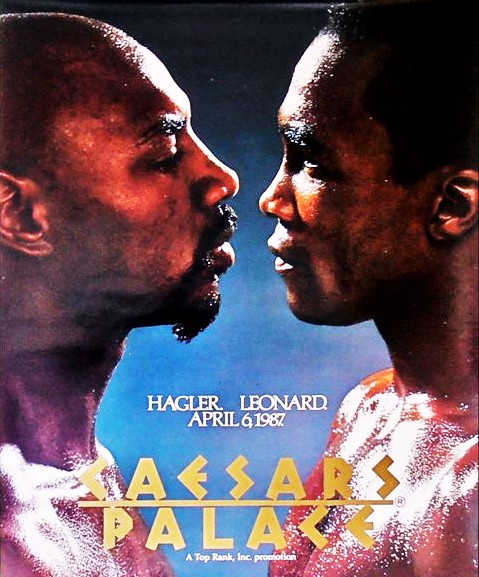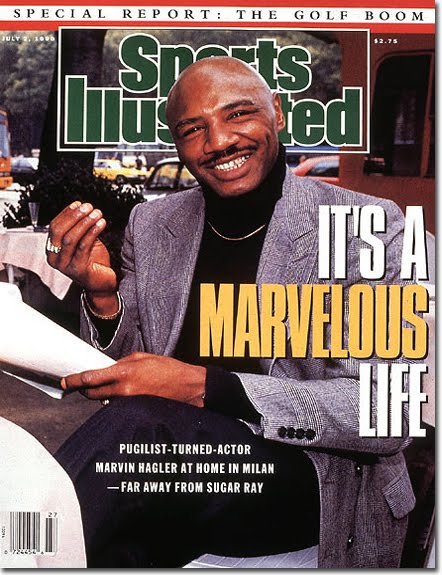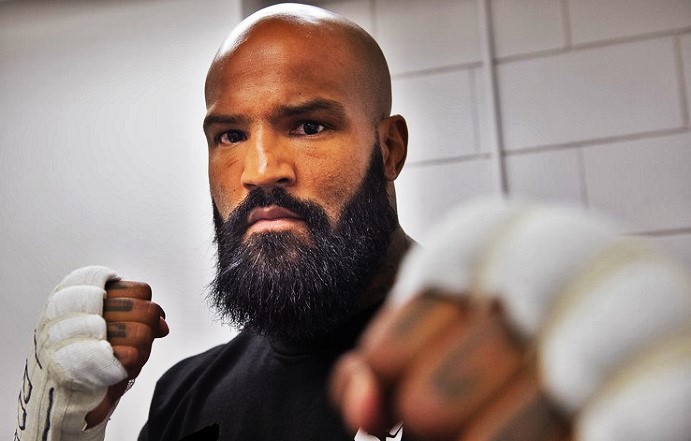Marvelous Marvin Hagler: 1954-2021
For those of us watching from the outside, who never knew Marvelous Marvin Hagler on a personal level, perhaps the characteristic which made the greatest impression was the man’s iron-clad belief in the virtue of hard work and discipline. No one, it is said, trained harder than Hagler, or submitted with greater zeal to the demands and discipline of his brutal trade. Training camp meant a prison where he rose early every morning to pound out the miles, where he focused on one thing: winning. And that’s what Marvelous Marvin did. He kept fighting and kept winning until he was on the top of the mountain, champion of the world, the best fighter in boxing, pound-for-pound. The Marvelous One. And one-of-a-kind.

The news that this latter-day great of professional prizefighting, a warrior who could have competed in any era of boxing, is now gone, comes as a terrible shock. He was only 66-years-old, still the object of celebration and veneration from boxing fans young and old. It’s a painful loss for the fight game, for a sport which struggles to match the same kind of excitement, intrigue and public interest which was the case during Hagler’s time, the 1970’s and 80’s.
Indeed, Marvelous Marvin experienced both the benefits and the drawbacks of being a professional prizefighter during that era. The drawbacks had to do with the fact that as he was coming up the ranks in the middleweight division, the public at large couldn’t take its eyes off the heavyweights and Muhammad Ali. And then when Ali started to fade away, the spotlight turned to a charismatic young boxer and Olympic gold medalist named Sugar Ray Leonard. While Leonard enjoyed prime time attention, Hagler was beating up all the middleweight contenders champion Carlos Monzon didn’t want to fight, but precious little in terms of national exposure and big money was coming Marvin’s way.

Indeed, it must have stung for Hagler to find himself as the supporting act for Sugar Ray in November of 1979 when both fought for world titles on national TV. And no doubt it stung even more after the judges somehow scored Marvin’s clinic against Vito Antuofermo a draw. But Hagler persevered and finally took what was rightfully his less than a year later, stopping Briatin’s Alan Minter in three bloody and brutal rounds in front of Minter’s hometown fans in London, England. The crowd reaction was of the most shocking and violent kind, with hooligans throwing cans and bottles into the ring and cutting short the new champion’s celebration, but somehow that was fitting for a fighter who had to struggle for every bit of success he ever got. As recounted on this website:
Nothing came easy for Marvelous Marvin Hagler, especially the glory. What should have been the most resplendent night of his entire career was marred by hate and drunkenness and racism. But Hagler had waited so long, had endured so much, that when it was all over, he refused to let the mayhem undermine his satisfaction. “It was a dream fulfilled,” he said of the moment when he realized he had won. He had finally done it; he was the undisputed middleweight champion of the world. Seven hard years of striving and struggling were, at long last, redeemed.

This was the enduring image of Hagler, the one which survived all the success that came after, the numerous championship wins and the multi-million dollar paydays in fights against Roberto Duran, Thomas Hearns and Sugar Ray Leonard. Hagler was the working man’s fighter, an honest tradesman of exceptional talent who knew his craft and had paid his dues. And then some. Clearly, what stoked his inner competitive fires more than anything else was the firm conviction that he deserved better, that others were getting the big money and the time in the spotlight that rightfully should have been his.

That changed after his huge showdown in 1985 against Thomas “Hit Man” Hearns. A clash between champions and the two best fighters in the game, Hagler vs Hearns set new records as boxing’s biggest “superfight” that year, the match the whole world couldn’t wait to see. How sweet it was for Marvelous Marvin to not only win, but to triumph after giving fans eight minutes of incredible action and excitement. Then came all the rewards and the glory, the TV commercials for Pizza Hut and Gillette, the acclaim as one of the best and baddest, bar none. It had been a long time coming, but finally the big payoff for all the hard work was his.
But money isn’t everything. And it was clear that even a record purse wasn’t enough to soothe the sting of seeing his hard-won world title go to Sugar Ray after a twelve round squeaker in Las Vegas. Hagler never accepted the outcome of that huge superfight in 1987, the crowning achievement of Leonard’s career. Maybe in part because the fight happened at least three years too late. And to Marvin’s credit, he walked the walk when it came to turning his back on a game he felt had betrayed him. He never fought again, though it would have been so easy to take one last huge payday in a rematch with Leonard or Hearns. Instead, Marvelous Marvin made a clean break. The closest he got to competing again was on those occasions when he sat ringside with a microphone while watching others duke it out. Aside from that, and from showing up for the annual Hall of Fame ceremonies in Canastota, Hagler moved on from boxing.

But that doesn’t mean he didn’t appreciate the attention of the fans, or the sound of his name being uttered in the same breath as that of fellow middleweight legends like Stanley Ketchel and Sugar Ray Robinson, or fellow all-time great southpaws like Tiger Flowers and Pernell Whitaker. He maintained a keen interest in boxing, though naturally he bristled when comparisons were made between a time of twelve round title fights and day-before weigh-ins, and his far more competitive era. He never shied away from passing judgment on the game and offering his opinions and perspective.
And that openness, that willingness to be candid and honest, was part of what earned him a devoted following and almost universal respect. In contrast to his great rival, Leonard, Hagler always said what he meant, and meant what he said. That, combined with the fact he took the hard, rough road to the top, fighting guys like Willie Monroe and Bobby Watts and Bennie Briscoe in front of hostile crowds, earning all he got through sheer grit and grind, made him a model of perseverance, an inspiration. No one could question his integrity or the fact he deserved all the sweet rewards that came his way. But he never forgot the price he paid to get there, or who helped him on the journey.

Beyond that, Marvelous Marvin spoke openly of his love for boxing, how the fight game was his “heart,” how throughout his career, it was an obsession. He joked once that if you opened up his bald head all you would find inside was one big boxing glove, that’s how much pugilism meant to him. Now we can only hope that Marvelous Marvin truly understood how much he meant to boxing, to all of us, to those who recognized his greatness and never imagined they’d have to say goodbye so soon. It’s hard to say, but it must be said: Rest easy, Marvelous One. You were truly marvelous. And you will be greatly missed. — Robert Portis





